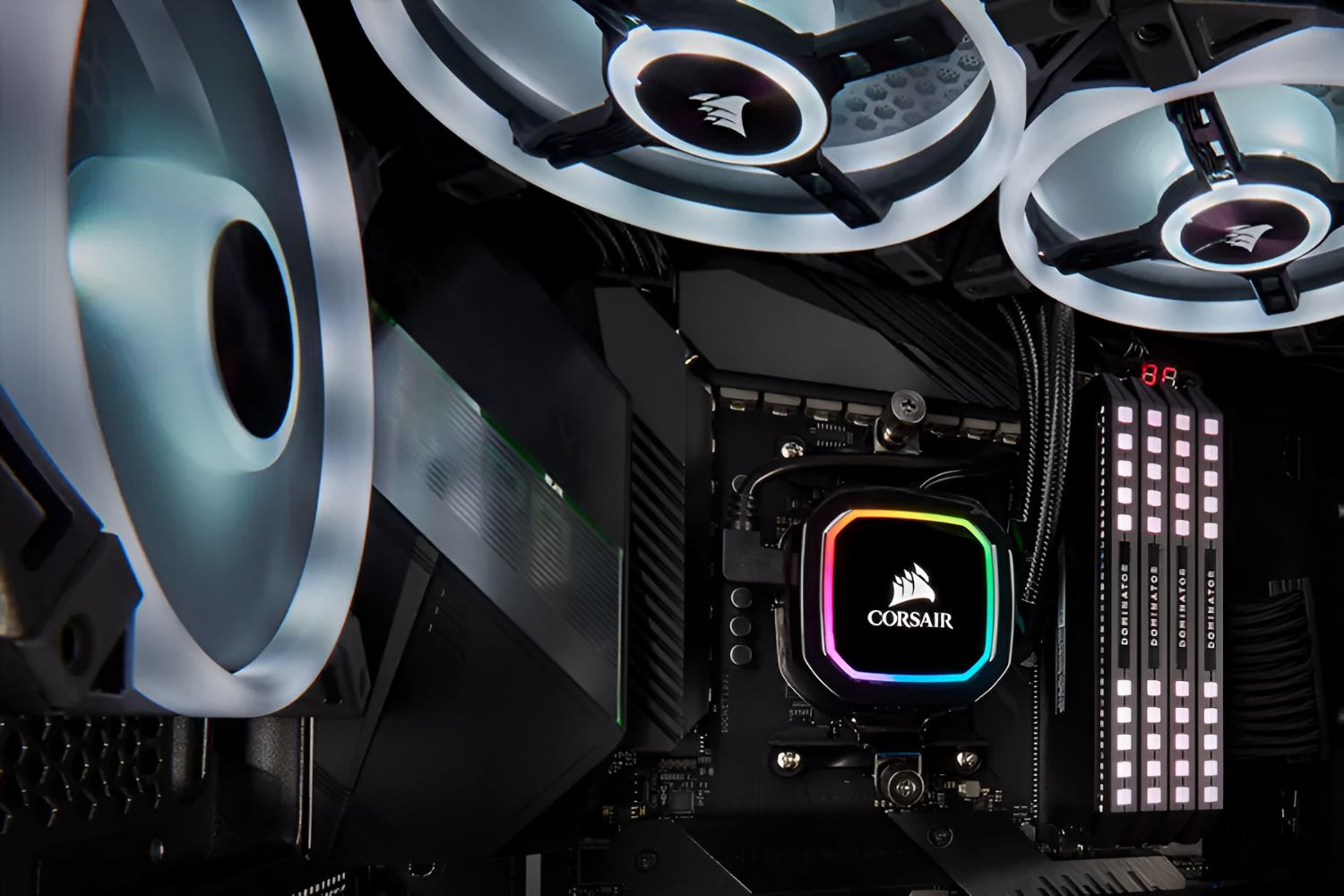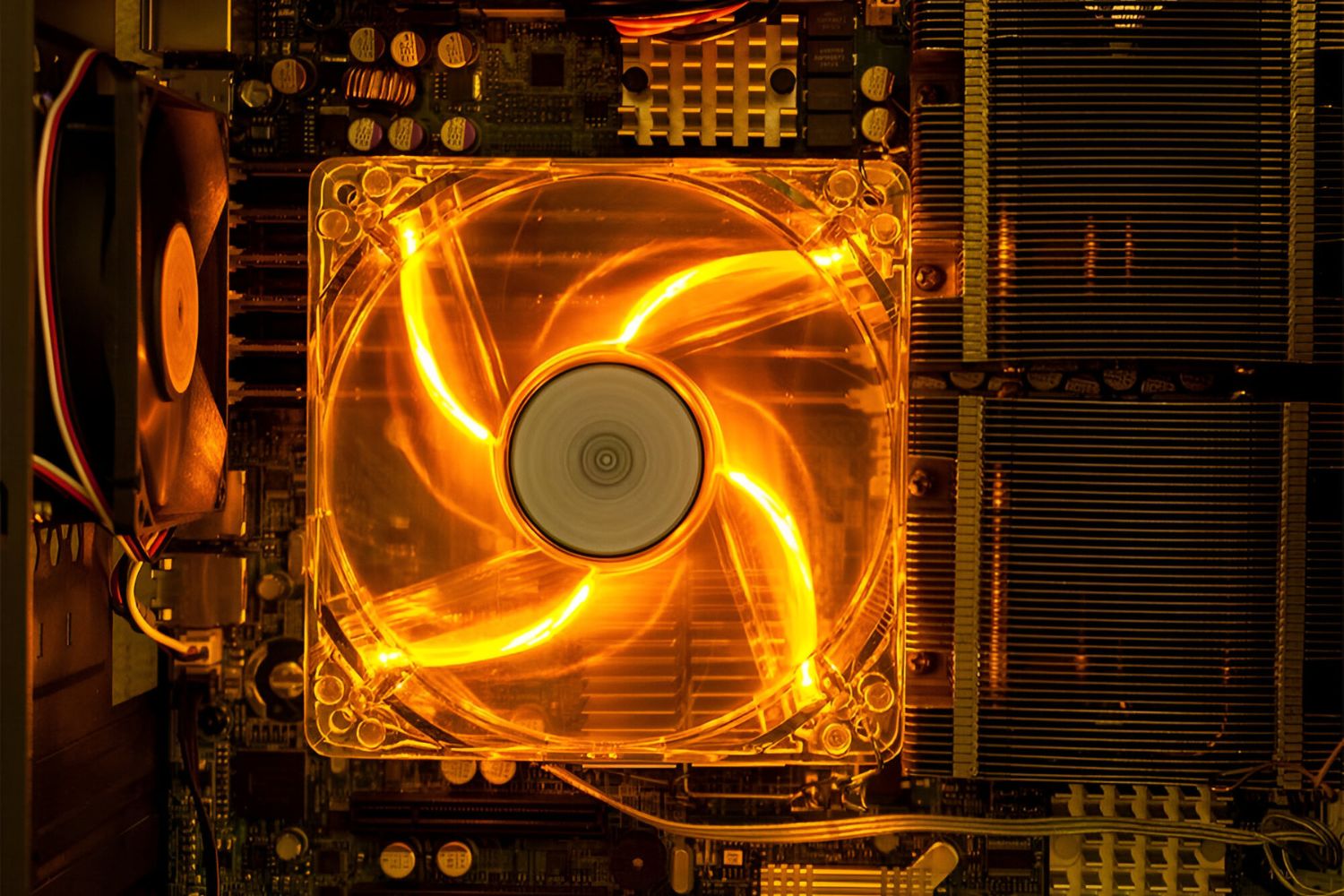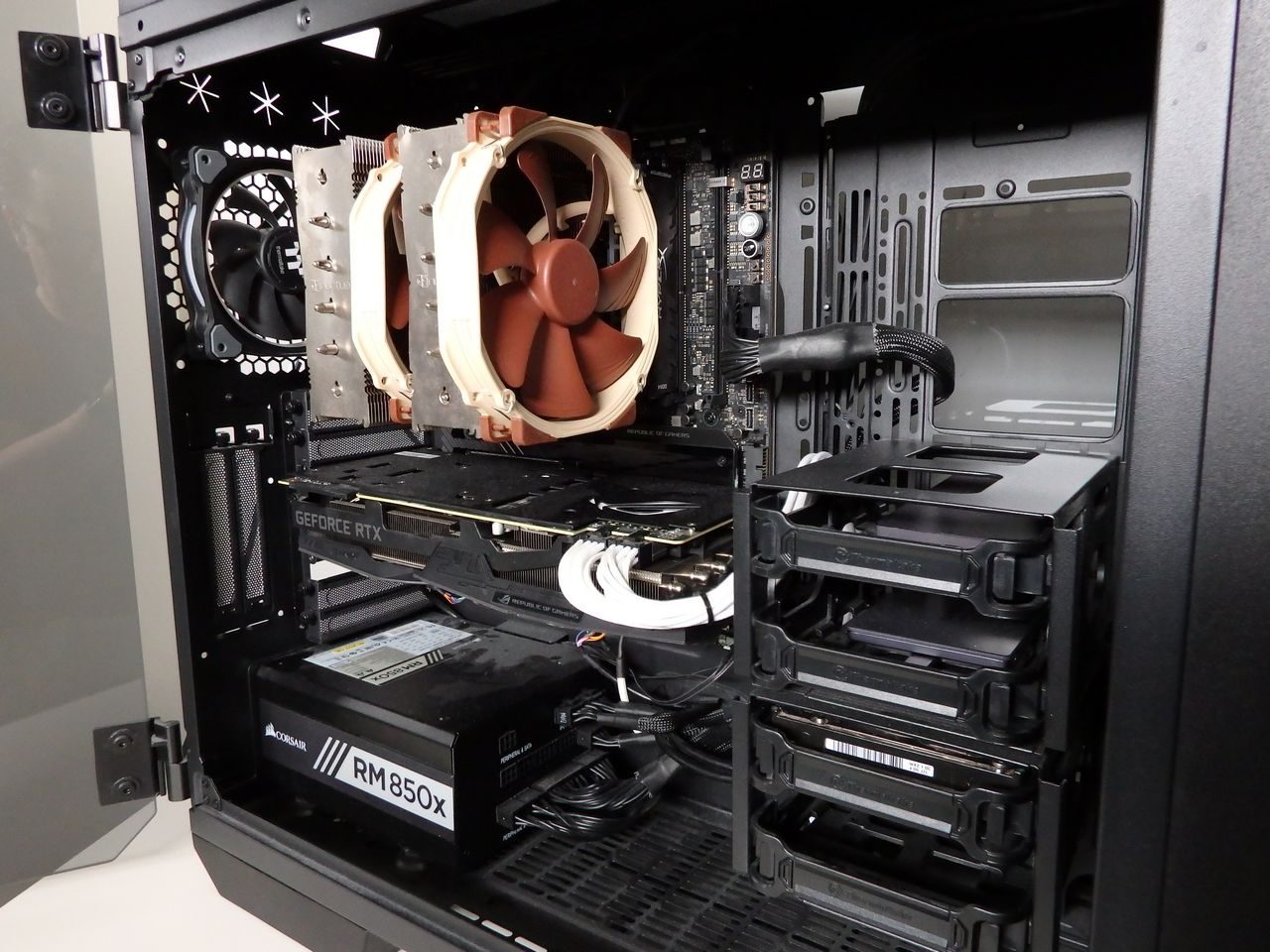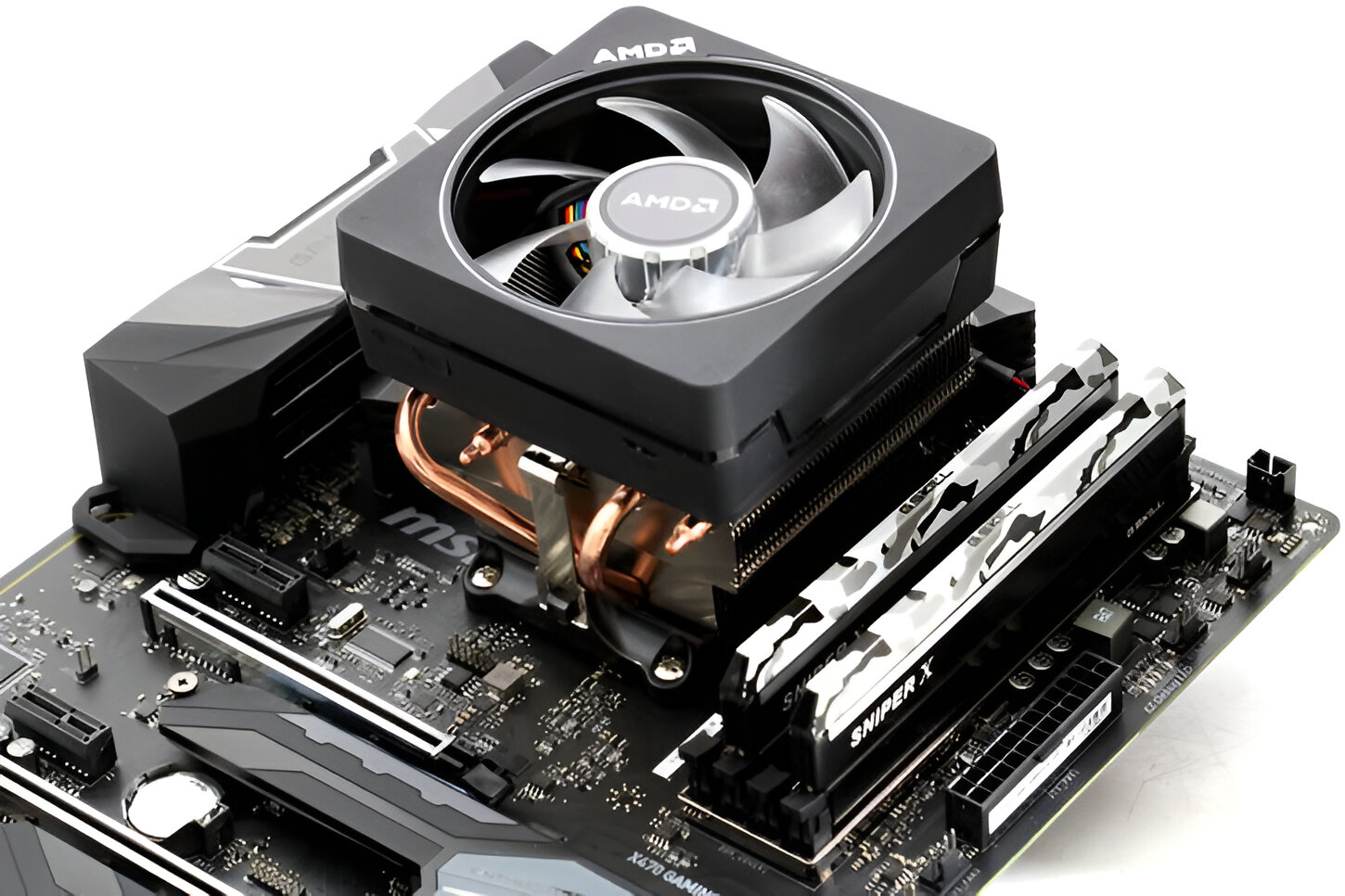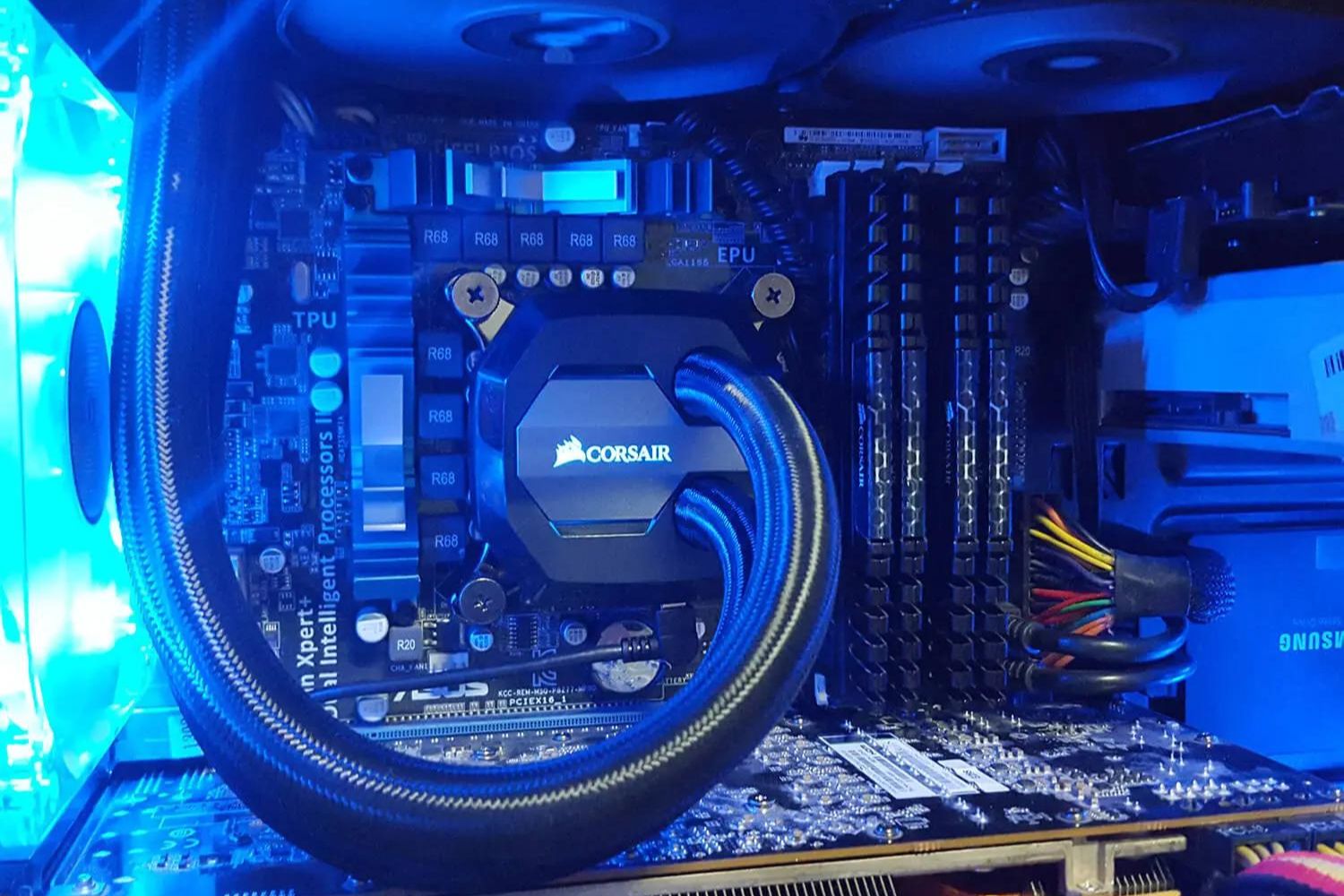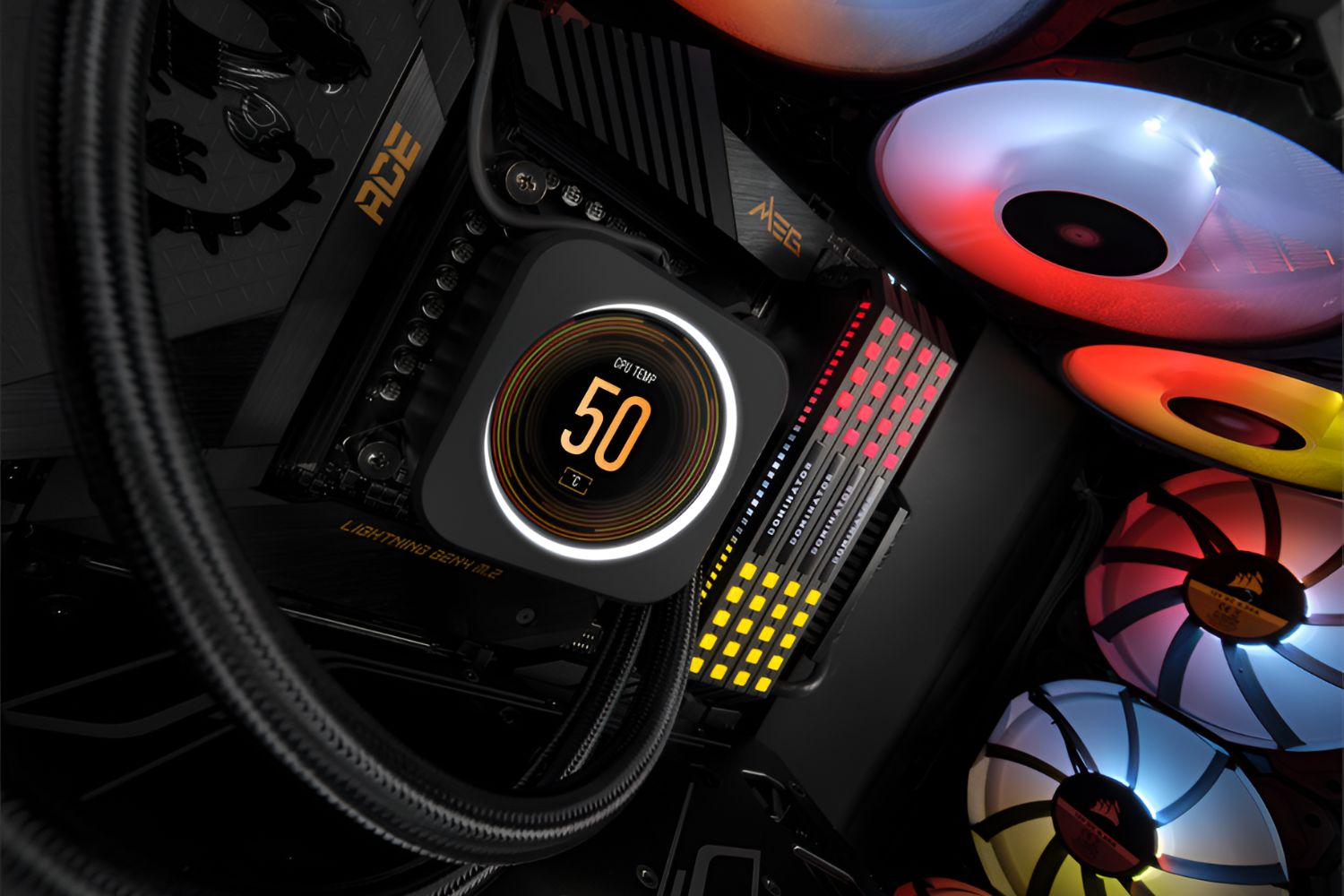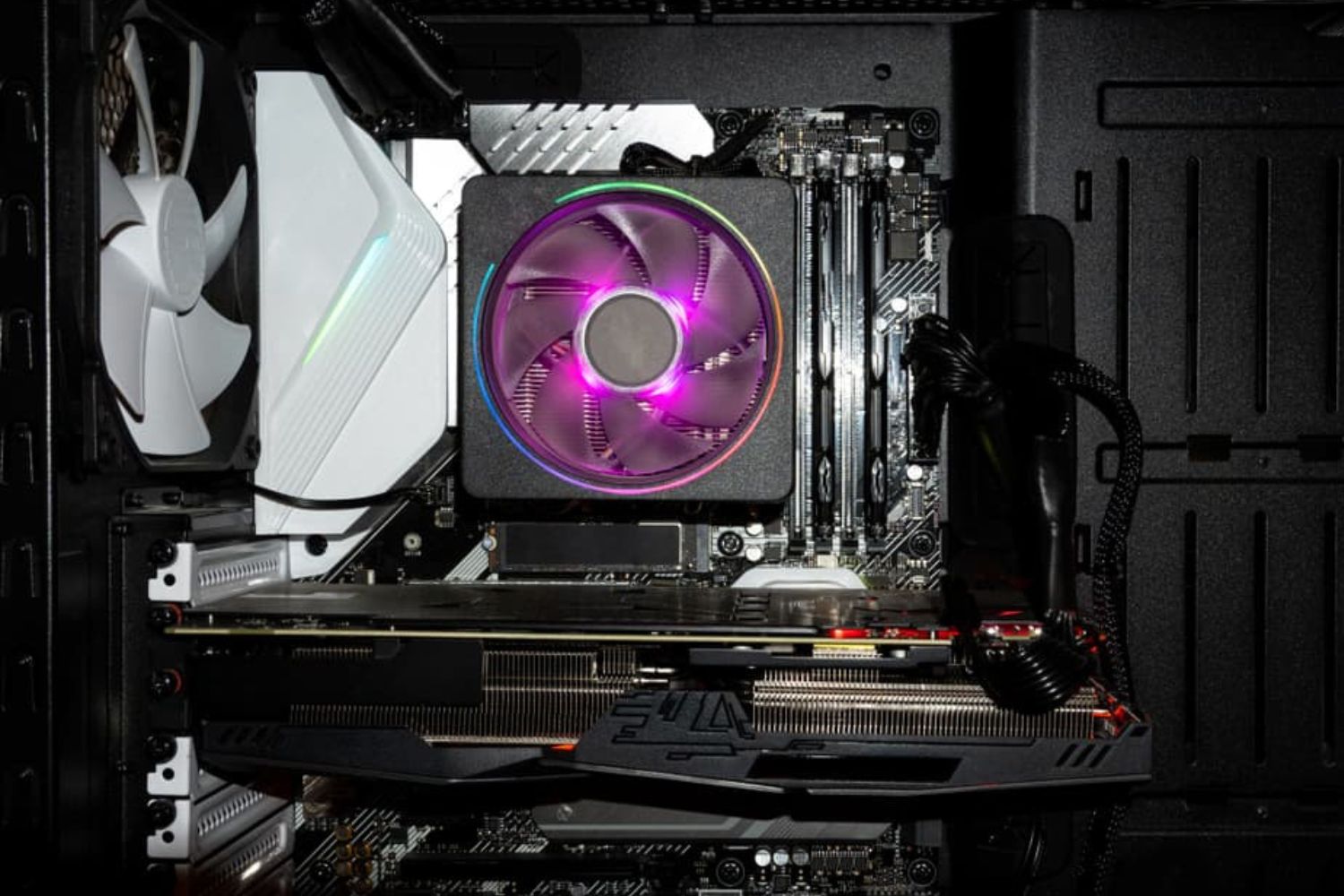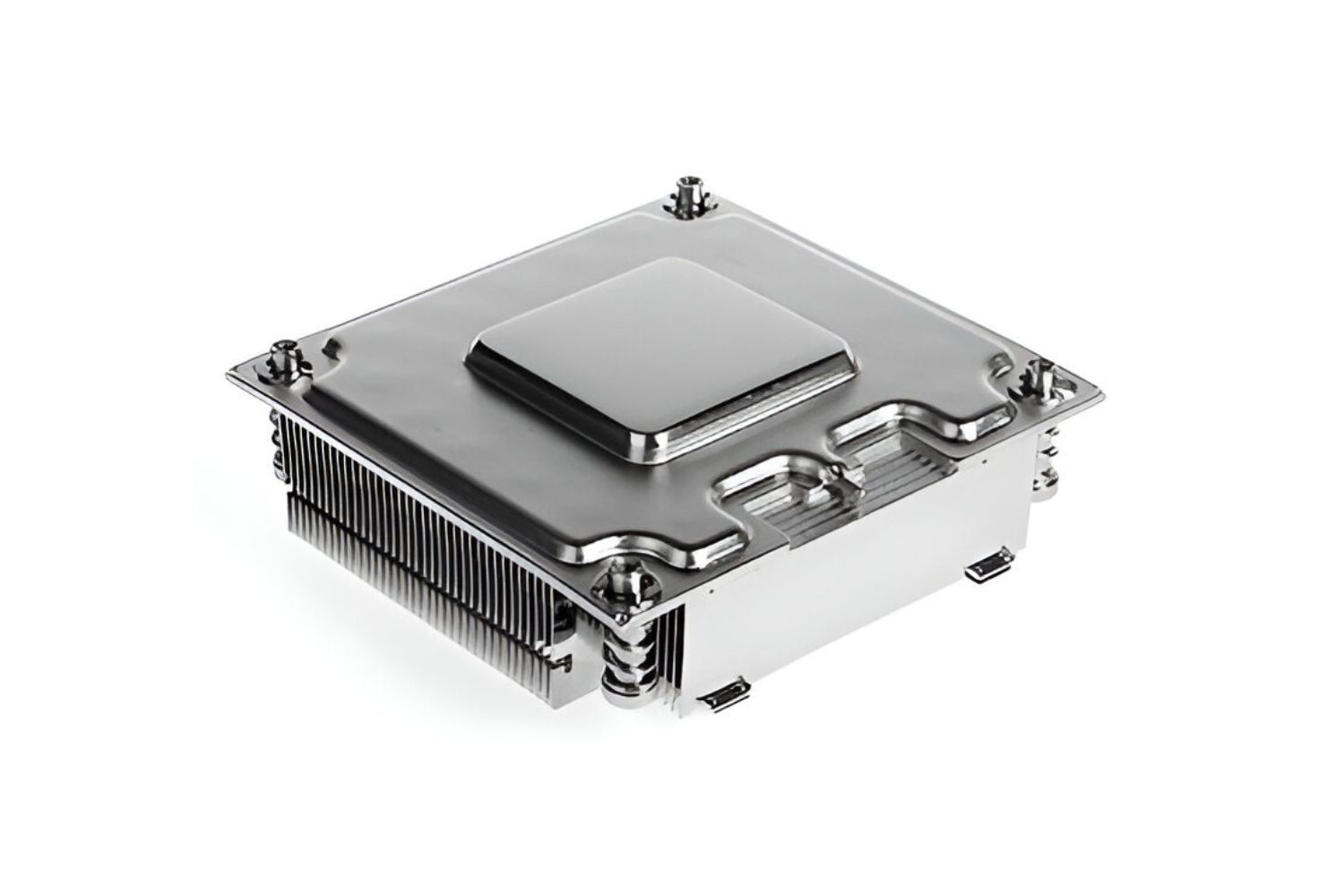Introduction
Welcome to our guide on liquid CPU coolers and the importance of fans in maintaining optimal performance. As computer technology continues to advance, the demand for powerful processors that can handle resource-intensive tasks has never been greater. However, keeping these high-performance CPUs cool is crucial to ensure their longevity and stability.
Enter liquid CPU coolers, a popular cooling solution for both enthusiasts and professionals alike. These coolers utilize a combination of liquid cooling components, such as radiators, pumps, and tubing, to dissipate heat efficiently. However, fans play a vital role in the overall cooling process.
In this article, we will explore the significance of fans in liquid CPU coolers and discuss the factors to consider when determining the number of fans needed. We’ll also delve into different types of fans for liquid CPU coolers and provide insights on noise considerations to help you make an informed decision.
Whether you’re an avid gamer, content creator, or someone who relies on their computer for intensive tasks, understanding the importance of fans in liquid CPU coolers is crucial in order to optimize your system’s performance and maximize its lifespan.
So, let’s dive in and discover the world of liquid CPU coolers and the vital role that fans play in maintaining cool and efficient computing.
The Importance of Fans in a Liquid CPU Cooler
Fans play a crucial role in a liquid CPU cooler, as they are responsible for dissipating heat from the liquid coolant. Unlike traditional air coolers, liquid CPU coolers use a closed-loop system where the liquid absorbs heat from the CPU and carries it to the radiator, where the heat is then expelled through the fans. Here are some key reasons why fans are essential components in a liquid CPU cooler:
1. Heat Dissipation: The primary function of fans in a liquid CPU cooler is to facilitate the transfer of heat from the radiator to the surrounding environment. The fans create airflow over the radiator, increasing its cooling efficiency and preventing the CPU from overheating. This is especially important when using overclocked processors or during intense gaming or rendering sessions.
2. Enhanced Cooling Capacity: By using liquid cooling, CPU coolers can dissipate heat more efficiently than traditional air coolers. The liquid coolant has a higher heat capacity compared to air, allowing it to absorb and carry away more heat from the CPU. The fans help in expelling the heat absorbed by the coolant, ensuring that the CPU remains at an optimal temperature.
3. Reduced Noise: Liquid CPU coolers are known for their quieter operation compared to air coolers. This is due to the fans running at lower RPMs while still providing excellent cooling performance. The lower noise levels make liquid CPU coolers a popular choice for those who prioritize a quieter computing experience.
4. Versatility and Customization: Fans in liquid CPU coolers offer more flexibility in terms of customization and control. Many liquid coolers come with software or hardware controls that allow users to adjust fan speeds and optimize cooling performance according to their specific needs. This level of customization enables users to strike a balance between cooling efficiency and noise levels.
Overall, the fans in a liquid CPU cooler are integral components that ensure proper heat dissipation and help maintain the CPU temperature within safe limits. By leveraging the benefits of liquid cooling and optimizing fan performance, users can unlock the full potential of their CPUs and prevent any performance throttling or potential long-term damage due to excessive heat.
Determining the Number of Fans Needed
When it comes to determining the number of fans needed in a liquid CPU cooler, several factors should be considered. These factors will help ensure optimal cooling performance and maintain a stable temperature for your CPU. Let’s explore the key considerations:
1. Radiator Size: The size of the radiator in your liquid CPU cooler will impact the number of fans required. Generally, larger radiators will have more surface area, allowing for better heat dissipation. Larger radiators often support multiple fan configurations, such as dual or triple fan setups. Smaller radiators, on the other hand, may only accommodate a single fan. Consider the size options available for your specific liquid CPU cooler model.
2. CPU Heat Output: The heat output of your CPU is one of the most critical factors in determining the number of fans needed. CPUs with higher thermal loads, such as overclocked processors or high-performance CPUs, will require more efficient cooling. In such cases, using additional fans or fans with higher airflow can help dissipate the heat more effectively and maintain lower temperatures.
3. Case Airflow: The overall airflow within your computer case should also be taken into account. The fans in your liquid CPU cooler should work in conjunction with the existing case fans to ensure proper airflow and heat dissipation throughout the system. If your case has limited airflow or lacks additional fans, you may need to consider adding more fans to compensate for the reduced airflow.
4. Noise Considerations: While additional fans can enhance cooling performance, they can also contribute to increased noise levels. It’s essential to strike a balance between cooling efficiency and noise output. Some liquid CPU coolers come with fans that have built-in noise reduction features or fan control options that allow you to adjust their speeds and noise levels. Make sure to consider your noise tolerance level and choose a fan configuration that suits your requirements.
5. Manufacturer Recommendations: It’s always a good idea to refer to the manufacturer’s recommendations and guidelines when determining the number of fans needed for your specific liquid CPU cooler model. Manufacturers often provide information on optimal fan configurations and radiator compatibility to help users achieve the best possible cooling performance.
By considering these factors and assessing the cooling requirements of your CPU and system, you can make an informed decision about the number of fans needed for your liquid CPU cooler. Remember to prioritize an optimal balance between cooling efficiency, noise levels, and compatibility within your system’s constraints to ensure long-term performance and stability.
Factors to Consider
When selecting fans for your liquid CPU cooler, it’s important to consider several factors to ensure optimal cooling performance. These factors will help you choose the right fans that meet your specific needs and requirements. Let’s explore the key considerations:
1. Airflow: The airflow provided by the fans is a crucial factor in cooling efficiency. It determines how effectively the fans can remove heat from the radiator. Look for fans with a high airflow rating, measured in cubic feet per minute (CFM), to ensure efficient heat dissipation.
2. Static Pressure: Static pressure refers to the force exerted by the fan to push air through the radiator fins. Since the radiator offers resistance to airflow, fans with high static pressure are crucial for effectively pushing air through the cooling fins. Look for fans specifically designed for radiator applications with high static pressure ratings.
3. Fan Size: The size of the fans should be compatible with the radiator and the available space in your case. Common fan sizes for liquid CPU coolers are 120mm and 140mm. Larger fan sizes often offer superior airflow and lower noise levels, but make sure they are compatible with your radiator and case configuration.
4. Fan Speed: Fan speed, measured in revolutions per minute (RPM), determines how fast the fans rotate and the amount of air they push through the radiator. Higher fan speeds result in increased cooling performance but can also lead to higher noise levels. Consider your noise tolerance and find a balance between cooling efficiency and noise output.
5. Fan Noise Level: Fan noise level is an important consideration, particularly if you value a quiet computing environment. Look for fans that have a low noise level rating, measured in decibels (dBA), to ensure a quieter operation without compromising cooling performance. Some fans also include noise reduction features, such as rubber mounting or vibration dampening pads, to further minimize noise output.
6. Fan Bearings: The type of bearings used in the fans can impact their longevity and noise levels. Common types of fan bearings include sleeve bearings, ball bearings, and fluid dynamic bearings (FDB). FDB fans are known for their durability and low noise levels, making them an ideal choice for liquid CPU cooling.
7. RGB Lighting: If aesthetics are important to you, consider fans with RGB lighting features. Many fans now come with customizable RGB lighting options, allowing you to match your system’s color scheme or create stunning lighting effects. However, prioritize cooling performance over aesthetics when making your decision.
By considering these factors, you can select fans that provide sufficient airflow, static pressure, and noise levels to meet your specific cooling needs. Remember to ensure compatibility with your radiator and case, and prioritize the cooling performance required for your CPU and system.
Noise Considerations
When choosing fans for your liquid CPU cooler, it’s important to take noise considerations into account. While fans are essential for cooling performance, excessive noise can be a nuisance and affect your overall computing experience. Here are some important factors to consider when it comes to noise:
1. Fan Speed: Fan speed directly impacts noise levels. Fans running at higher speeds generally produce more noise compared to those running at lower speeds. Consider adjusting the fan speed to achieve a balance between cooling performance and noise output. Many liquid CPU coolers include fan control options that allow you to customize fan speeds according to your needs.
2. Fan Design and Bearings: The design and type of bearings used in fans can influence their noise levels. Sleeve bearings are typically the least expensive option but tend to generate more noise. Ball bearings offer increased durability and reduced noise, while fluid dynamic bearings (FDB) are known for their quiet operation and extended lifespan. Consider fans with FDB or ball bearings for quieter performance.
3. Fan Size: Fan size can impact noise levels as larger fans tend to distribute airflow more evenly and operate at lower speeds, resulting in reduced noise. Consider opting for larger fan sizes such as 140mm fans if your case and radiator can accommodate them. However, ensure compatibility with your case and radiator specifications before making a decision.
4. Noise Dampening Features: Some fans come with noise dampening features such as rubber mounting pads or vibration dampening materials. These features help reduce vibrations and minimize noise transmission to the rest of the system. Look for fans with these added features to further enhance the overall noise reduction.
5. Fan Placement: The placement of fans within your case can affect noise levels as well. Improperly positioned fans or fans that are too close to obstructions can create turbulence, resulting in increased noise. Ensure that fans are securely mounted and have sufficient clearance from other components and obstructions to promote smooth airflow and minimize noise generation.
6. Assessing Noise Levels: When considering different fans, it’s helpful to check for noise level specifications provided by the manufacturer. Noise levels are measured in decibels (dBA), and lower dBA ratings indicate quieter operation. Compare the noise levels of different fans to find the most suitable option for your desired noise output.
In summary, noise considerations are crucial when selecting fans for your liquid CPU cooler. By considering factors such as fan speed, design, size, noise dampening features, and fan placement, you can make an informed decision to maximize cooling performance while minimizing noise levels. Remember to strike a balance between cooling efficiency and noise output that aligns with your personal preferences and requirements.
Types of Fans for Liquid CPU Coolers
When it comes to selecting fans for your liquid CPU cooler, you’ll encounter different types that offer varying performance characteristics and features. Understanding the different fan types will help you make an informed decision based on your specific cooling needs. Let’s explore the most common types of fans used in liquid CPU coolers:
1. Air Pressure Fans: Air pressure fans, also known as static pressure fans, are specifically designed to overcome the resistance of a radiator or heatsink. They excel at pushing air through densely packed fins, making them ideal for use with liquid CPU coolers. Air pressure fans typically have a higher static pressure rating, ensuring efficient heat dissipation even in restricted airflow environments.
2. High-Airflow Fans: High-airflow fans prioritize airflow volume and are designed to move a large amount of air through the system. They are suitable for situations where low resistance is encountered, such as open-air configurations or cases with excellent ventilation. While high-airflow fans may not offer the same static pressure as air pressure fans, they can still provide sufficient cooling performance for many liquid CPU cooling setups.
3. PWM Fans: PWM (Pulse Width Modulation) fans are equipped with a built-in controller that allows for dynamic fan speed adjustment. Through the PWM signal from the motherboard or a dedicated fan controller, the fan speed can be adjusted automatically based on the CPU’s temperature. PWM fans provide efficient cooling while offering the flexibility to fine-tune fan speeds and noise levels according to the system’s cooling demands.
4. RGB Fans: RGB fans have gained popularity for their ability to enhance the aesthetics of a PC build. These fans come with customizable RGB lighting features that allow you to match your system’s color scheme or create stunning lighting effects. While RGB fans prioritize style, it’s important to also ensure they deliver sufficient cooling performance to meet your CPU’s needs.
5. Noise-Optimized Fans: Noise-optimized fans are designed with low-noise operation in mind, prioritizing quiet computing environments. These fans often incorporate noise-reduction features such as rubber mounting pads or specialized fan blade designs to minimize vibrations and noise output. If noise is a significant concern, noise-optimized fans are a great option for maintaining a peaceful computing experience without sacrificing cooling performance.
6. Multi-Fan Configurations: Some liquid CPU coolers support multi-fan configurations, such as dual or triple fan setups. These configurations capitalize on the combined cooling power of multiple fans to achieve enhanced cooling performance. Dual or triple fan setups can be particularly beneficial when using high-performance CPUs or when engaging in demanding tasks such as overclocking or intense gaming sessions.
When choosing the type of fan for your liquid CPU cooler, consider your cooling requirements, noise preferences, and aesthetic preferences. Taking all these factors into account will help you select the most suitable fan type that strikes the right balance between cooling efficiency, noise levels, and visual appeal for your specific liquid CPU cooling setup.
Conclusion
Choosing the right fans for your liquid CPU cooler is crucial for optimal cooling performance and maintaining a stable temperature for your CPU. By considering factors such as radiator size, CPU heat output, case airflow, noise levels, and fan specifications, you can make an informed decision that meets your specific cooling needs.
Fans play a vital role in dissipating heat from the liquid coolant and ensuring efficient cooling for your CPU. They enhance cooling capacity, reduce noise levels, and provide versatility and customization options. Factors such as airflow, static pressure, fan size, and noise levels should be carefully evaluated to ensure the best possible cooling performance while maintaining a quiet computing experience.
Additionally, understanding different types of fans, such as air pressure fans, high-airflow fans, PWM fans, RGB fans, noise-optimized fans, and multi-fan configurations, allows you to choose the most suitable option for your liquid CPU cooler setup. Consider your cooling requirements, noise preferences, and aesthetic preferences when making your selection.
Remember to also consult the manufacturer’s recommendations and guidelines for your specific liquid CPU cooler model. These guidelines can provide valuable information on optimal fan configurations and radiator compatibility, ensuring that you achieve maximum cooling efficiency and performance.
In conclusion, selecting the right fans for your liquid CPU cooler is essential for maintaining the longevity and stability of your CPU. By understanding the importance of fans, determining the number of fans needed, considering various factors, and exploring different fan types, you can optimize the cooling performance of your liquid CPU cooler and enjoy a high-performance computing experience.







